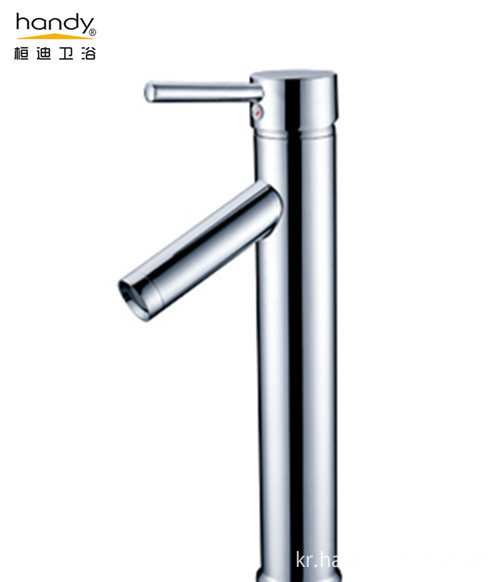
Privacy statement: Your privacy is very important to Us. Our company promises not to disclose your personal information to any external company with out your explicit permission.
With the development of technology, nowadays in the faucet products, many materials are manufactured, such as copper, stainless steel, PVC, iron, zinc alloy and so on. In the faucet market, the most common faucets are made of copper faucets and stainless steel faucets. Today Xiao Bian came to share with you the advantages and disadvantages of these two materials.

First, the advantages of copper faucet:
(1) The all-copper material faucet has mature technology, strong plasticity, and convenient processing, and can produce various shapes.
(2) The surface treatment process is very versatile, drawing, painting, coloring, porcelain, etc. can be done, and high-brightness mirror coating can be produced.
(3) High-grade faucets require high copper material and plating. High-quality, complete plating layers have very high corrosion resistance and high surface hardness.
Second, the drawbacks of copper faucet:
(1) The thickness of the plating layer of the copper faucet, regardless of its thickness, will oxidize and fall off over time. After oxidation, it gradually loses its surface gloss and pits. Finally, the plating layer peels off and exposes copper rust, which affects the appearance.
(2) The copper material itself contains lead, which is harmful to the human body, but it is impossible to achieve lead-free performance due to the limitation of the copper production process. The so-called "lead-free faucets" sold in the market are actually "low lead content" and are not truly "lead-free."
(3) The electroplating process is not environmentally friendly, and the chemistry produced by the electroplating process is extremely serious for ecological damage.
(4) The daily cleaning of copper faucets cannot use cleaners or hard towels because most of the cleaning agents will corrode the plating and cause them to fall off, while hard towels and other cleaning materials will scratch the plating.
Third, the advantages of stainless steel faucets:
(1) Stainless steel is one of the most commonly used materials for the human body. Health, environmental protection, and strong corrosion resistance, non-hazardous substances contaminate water.
(2) Stainless steel faucet material has a strong corrosion resistance, and does not require electroplating, only need to polish the surface, the color can be developed.
(3) The stainless steel faucet is easy to clean. The best cleaning product for the stainless steel faucet is: any kind of detergent water and steel ball.
Fourth, the disadvantages of stainless steel faucets:
(1) The stainless steel faucet has a small surface finish, and the polished brightness is not as smooth as the copper plating.
(2) The casting and processing of stainless steel faucets are all very complicated. The melting point of stainless steel is about 1600 degrees, and the melting point of copper is about 1000 degrees. The stainless steel must be finished by precision casting, and copper only needs to be completed by die casting; therefore, the processing cost of stainless steel faucets is all copper. More than ten times.
November 24, 2023
November 09, 2023
이 업체에게 이메일로 보내기
November 24, 2023
November 09, 2023
April 02, 2020
질문 보내기

Ms. linly
전화 번호:86-0755-82292166
Fax:86-0755-82185124
휴대전화:+8613751081118
이메일:464021406@qq.com
회사 주소:FLATB,NO.1511,WENJINDU CUSTOMS BLDG.,DONGMEN, Shenzhen, Guangdong
모바일 사이트


Privacy statement: Your privacy is very important to Us. Our company promises not to disclose your personal information to any external company with out your explicit permission.

Fill in more information so that we can get in touch with you faster
Privacy statement: Your privacy is very important to Us. Our company promises not to disclose your personal information to any external company with out your explicit permission.